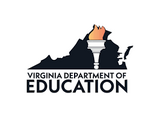
English Instructional Plan – Characterization: Character Development Grade 5
- Subject:
- English
- Reading
- Material Type:
- Lesson Plan
- Author:
- VDOE Project Team
- Date Added:
- 04/14/2022

English Instructional Plan – Characterization: Character Development Grade 5
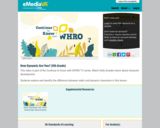
This video is part of the Continue to Know with WHRO TV series. Watch Kelly Sowden teach about character development.
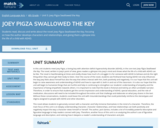
In this unit students meet Joey Pigza, a loving boy with attention deficit hyperactivity disorder (ADHD), in the core text Joey Pigza Swallowed the Key. The novel, written in Joey's point of view, gives readers a glimpse into Joey's mind and shows what the life of a child with ADHD can be like. The novel is heartbreaking at times and vividly shows how much of a struggle it is for someone with ADHD to behave and do the right thing when they cannot get their body to listen. Over the course of the novel, students see firsthand how having ADHD not only influences the way Joey feels about himself but also the way that others interact with him, both positively and negatively. It is our hope that this unit will begin to raise awareness and understanding of ADHD and how to cope with it, both in and out of the classroom. It is also our hope that this unit will begin to humanize things that are hurtful and help in continuing to strengthen our students' understanding of empathy and the importance of being empathetic towards others. It is important to note that this book is fictional and told by an often-unreliable narrator. Therefore, in order to ensure that students get the correct impression and understanding of ADHD, special education, and the role of medication, discussions will need to be included throughout the entire unit that challenge and elaborate on what Joey shares in the text. Without these conversations, students could leave the unit with misunderstandings that could potentially reinforce the stereotypes and stigma assigned to people with ADHD and other disorders.
This novel allows students to genuinely connect with a character and fully immerse themselves in the mind of a character. Therefore, the main focus of this unit is on deeply understanding character, character relationships, and how relationships can both positively and negatively impact the way a character views himself or herself. The author, Jack Gantos, includes a lot of incredibly powerful descriptive and figurative language to help readers connect with Joey. Therefore, another focus of this unit is on analyzing the author's use of figurative language and description, and noticing how it deepens a reader's understanding of characters and plot.
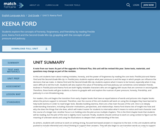
In this unit students learn about making mistakes, honesty, and the power of forgiveness by reading the core texts Freckle Juice and Keena Ford and the Second-Grade Mix-Up. In Freckle Juice, students explore what peer pressure is and the ways in which people can influence the decisions that we make. In Keena Ford and the Second-Grade Mix-Up, students explore what it means to be honest, especially when it may seem difficult to tell the truth. Students will also explore the value of friendship and how jealousy can sometimes come between friends. Andrew in Freckle Juice and Keena Ford are both highly relatable characters who are struggling with issues that are common in second grade. Therefore, these books will give students a chance to grapple with and explore the nuances of peer pressure, honesty, friendship, and jealously in a non-threatening way.
For readers, this unit begins the transition from early chapter books that have an equal balance of words and pictures into chapter books where the picture support is removed. Therefore, over the course of the unit students will work on using the strategies they have learned to help build stamina in order to read longer texts. Besides building stamina, there are a few main focuses of the unit. One is on deeply understanding characters, including character motivations, perspectives, and relationships. Keena Ford shares lots of insight into how and why she does the things that she does, which will make it easier for students to internalize what it means to notice and track character over the course of a longer text. Another focus is on holding onto the plot across multiple chapters. This is the third chapter book that students will be reading, but the plot of this text is slightly more nuanced. Finally, students should continue to work on using context to figure out the meaning of unknown words and using the illustrations to deepen their understanding of the text.
As writers, students will continue to work on writing strong, focused text-based answers in response to the text. In this unit students will be pushed to include inferential and critical thinking to support their answers. They will also begin to use transition words as a way to support organizational structure and evidence. All grammar Focus Correction Areas in this unit are a review; therefore, students should be receiving weekly individualized feedback.

Looking for a new way to teach direct and indirect characterization? By connecting these English concepts to Computer Science, students will not only learn how to describe the characters they are reading about, but they will also be able to see how these concepts apply to computer hardware, software, abstraction, and End-User Agreements.

In this unit, students grapple with common second grade themes through reading the easily relatable series Pinky and Rex. Through connecting with Pinky and Rex, students will learn that it's okay to be different and to be proud of who they are, no matter what others may think. Students will also learn about what it truly means to be a good friend and how friends can support and stick up for one another in a variety of ways. They will also see that it's okay for boys and girls to be friends, even best friends. This unit builds onto multiple units from first grade in which students learned what it means to be a good friend and a good person. It is our hope that this unit deepens the understandings developed in previous grades by giving students characters to connect with. These connections are especially important for students who are struggling with some of the same issues and aren't sure how to process or talk about them.
In reading this unit is a transition from units that were predominately read aloud into a unit that is almost entirely shared or independent reading. Pinky and Rex are perfect texts for second graders, not only because of the important themes they teach but because of the way in which James Howe develops character and plot over the course of the series. As readers, students will be challenged to notice the descriptive details James Howe includes to show how characters feel in response to different problems and challenges. They will also be challenged to notice how a character's dialogue shows what they are truly feeling and how the different'said' words James Howe includes deepens that understanding. Students will also begin to analyze why certain words in a text are written in italics and what that shows about how a character is feeling. This deep dive into character will allow students to truly understand the characters and the lessons that they are learning. By reading four books in the series, students will also have the chance to see how characters develop over the course of multiple texts. By the fourth text, students will have a deeper, more nuanced understanding of all three characters.
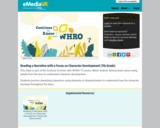
This video is part of the Continue to Know with WHRO TV series. Watch Andrew Sytsma teach about using details from the story to understand character development.

In this third-grade literature course, students explore the concepts of courage and friendship, beginning in Unit 1 with an author study of Roald Dahl. Even though Roald Dahl is known for writing silly, exaggerated stories with highly engaging characters, his stories have important themes and messages embedded in them.
In addition to launching a year-long exploration of the themes of friendship and courage, these texts will also help establish a positive classroom culture as students analyze what it means to help others, be a good person, and show courage. We hope this unit, in connection with all of the units in our third-grade literature course, will help students develop a deep and nuanced understanding of both friendship and courage.
In reading and writing, this unit focuses on setting a strong foundation for text analysis. Students will dive deep into characters and study the ways in which authors develop characters. They will analyze author's word choice, both as a strategy for figuring out unknown words and as a way to improve their own narrative writing. Roald Dahl's fun and playful writing style also allows for an exploration of how reading with expression and fluency helps develop comprehension.
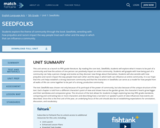
This unit serves as a launch to fifth grade literature. By reading the core text, Seedfolks, students will explore what it means to be part of a community and how the actions of one person can positively impact an entire community. Students will grapple with how being part of a community can help a person change and evolve as they discover new things about themselves. Students will also wrestle with how prejudice and racism impact the way people treat each other and the ways in which both can influence an entire community. It is our hope that this unit helps establish a strong classroom community and that the characters in Seedfolks can serve as a model for how people from all walks of life can come together to be part of a strong, productive community.
The text Seedfolks was chosen not only because of its portrayal of the power of community, but also because of the unique structure of the text. Each chapter is told from a different character's point of view and shows how as the garden grows, the character's hearts grow bigger and their worldview and compassion grow. The structure of the text allows for students to begin exploring two key fifth grade standards, comparing and contrasting two or more characters and describing how a narrator's or speaker's point of view influences how events are described. Since this is the first unit of the year, an underlying focus of the unit should also be on establishing expectations for annotation, discussion, and vocabulary.

In Grade 4 Fiction, students grapple with the overarching question of how a person develops values, identities, and beliefs. In this unit students dig deeply into how families shape a person's identity, values, and beliefs and how relationships with others can change a person's identity. Students will also explore what it means to have good fortune and how a person's view on fortune varies depending on his/her values and beliefs. It is our hope that this unit, in connection with other units from the entire year-long sequence, will help build a deeper understanding of how we become who we are and the positive and negative factors that influence us along the way.
Where the Mountain Meets the Moon was chosen as an engaging text to help build excitement at the beginning of the year, while simultaneously allowing for deep discussions about character, setting, vocabulary, and the larger theme of identity. Over the course of the novel, the author, Grace Lin, includes lots of detail and description to reveal information about characters and how they change based on experiences and relationships. Students will be challenged to notice the details that Grace Lin includes and analyze how the details build to support a deeper, more nuanced understanding of characters. Grace Lin also includes lots of powerful vocabulary and figurative language as a way of helping readers visualize exactly what is happening in the story. Students will be challenged to figure out the meaning of unknown words and figurative language and analyze why the author made particular word choices. In this unit students will also begin to use summarization as a strategy to track the plot of a longer text.
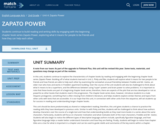
In this unit, students continue to explore the characteristics of chapter books by reading and engaging with the beginning chapter book series Zapato Power. Building off of what students learned in Unit 2, Pinky and Rex, students will explore what it means for two people to be friends and how friends are able to help each other by examining the somewhat unusual friendship between Freddie and Mr. Vaslov, an older man who lives and works in Freddie's apartment building. Over the course of the unit students will also be challenged to think about what it means to be a superhero, and the differences between using'super' powers and brain power to solve problems. It is important to note that these books are part of a beginning chapter book series; therefore, there are aspects of the plot that are less developed or not as powerful as other books that students read in the progression. The chapter book series does, however, introduce students to a male Hispanic protagonist, something that is often missing from children's literature, and helps students explore similar themes and topics from other units with texts that are accessible. It is our hope that this unit, in connection with other units from the sequence, will set students up for success in reading and understanding longer chapter books.
This unit should be done predominately as shared or independent reading; therefore, this unit gives students a chance to practice the reading skills they have developed in previous units. Similar to with Pinky and Rex, students will be challenged to think about how authors develop characters over the course of a single text and how that understanding builds as they read more books in a series about the same characters. Particularly, students will focus on character motivation and what motivates both of the main characters, Freddie and Mr. Vaslov. Students will also begin to notice the different types of descriptive language authors include, specifically figurative language, and how figurative language helps a reader better understand characters and how they are feeling. Finally, students will begin to notice how chapter titles are a clue for what is important in a chapter and can be used to guide retells and summaries of the key events within a chapter.